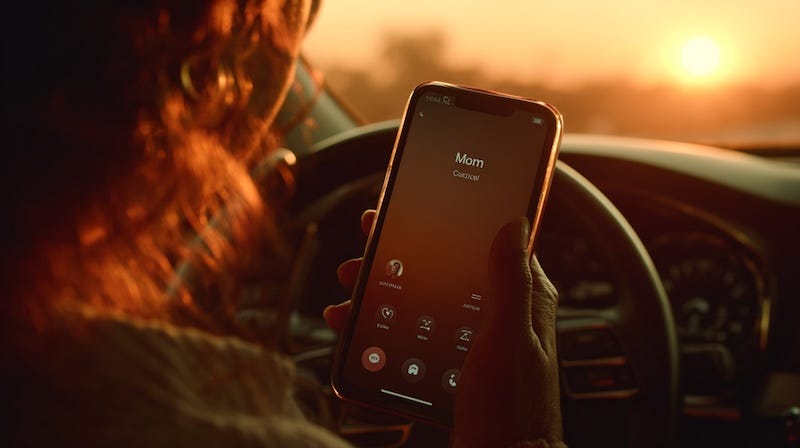338. The Illusion of Progress
We work hard every day to check boxes off our to do lists, but what if all that work is merely an illusion of progress. Maybe if you could only multitask.
This is The Best Leadership Newsletter Ever, the most fun way to learn life’s leadership lessons. My name is Jeff Matlow. I am a leadership coach.
I help leaders solve their biggest problems fast so they can sleep better at night.One day, when I was 13 years old, I decided to teach myself how to juggle.
I’m not sure why I decided to do it. I suppose juggling seemed like a cool thing to do, or at least it was a necessary survival tactic in case I was kidnapped at gunpoint and told that I would be killed if I didn’t immediately prove that I could juggle.
Keep in mind, there was no YouTube back then. Heck, the Internet hadn’t even been invented. So I was forced to figure out how to juggle the old-fashioned way.
Me.
The front lawn.
And a tin of tennis balls.
I started learning to juggle like any 13-year-old would: I tossed a bunch of balls in the air and tried to keep them moving, but all they did was fall to the ground.
After doing this over and over until my back hurt from picking up the balls, I realized there had to be a better way.
So I put down all but one tennis ball and started tossing it into the air from one hand to the other. It seemed to be a good idea to just juggle one ball before I got to more.
I did that until I perfected it.
Honestly, the one-ball juggle was pretty simple. I got bored quickly and needed to add more complexity. So I brought another ball into the mix and relentlessly focused on juggling two tennis balls.
My goal was to juggle those two balls in a consistent and repeatable manner. It took patience and commitment, and more time than I expected, but I did it.
Then I got bored again, so I picked up the third.
And that’s when everything went to hell.
But if nothing else, I’m a stubborn, goal-oriented person - so I persisted. After an hour or so, I was finally able to juggle three tennis balls with somewhat consistency.
I then tried to juggle four balls. That didn’t go so well. I convinced myself that four balls is less about juggling and more about showing off, and if I had to juggle at gunpoint, I don’t think they’d care as to whether I juggled three balls or four.
So I stopped at three. Mission accomplished. Kidnapping averted.
There’s a reason I’m telling you this story, and I trust that we will both figure it out soon.
In the meantime, let’s talk about the Global Workplace Theory.
The Illusion of Focus
In 2004, a study found that drivers using cell phones — even hands-free usage — were just as likely to get into car accidents as intoxicated drivers.
Let me repeat, driving while using your phone - even just talking on it - is the same as drunk driving. You have the same decreased attention and the same slower reaction times.
Why? Because of the Global Workspace Theory.
What it says is that humans can only have one “stream” of information enter conscious processing at a time. In other words, you can focus on talking on the phone or you can focus on driving - you can’t consciously do both at the same time.
<screeeech>
<narrowly avoids kid running into the street>
In addition to the Global Workplace Theory, let me also introduce you to the Capacity Theory. The basic premise of Capacity Theory is that our brains only have so much “attention capacity.” When you exceed it, performance drops.
These are the reasons why you think you are in control when you’re driving while on your phone, but being in control is just an illusion. You aren’t.
And this is why we’re going to have a quick chat about multitasking.
The Illusion of Multitasking
Multitasking isn’t real. You may think you’re a good multitasker, but you’re wrong.
You can’t be good at something that doesn’t exist.
I just talked to you about the Global Workspace Theory, which says that the human brain can consciously focus on only one thing at a time. Multitasking isn’t actually multitasking as it is doing one thing at a time, but switching back and forth between things really quickly.
99% of all humans suck at doing this.
You are among the 99% - I guarantee it.
According to Gerald Weinberg, multitasking can kill your productivity by up to 80%. But since that seems really high, let’s instead resort to the findings of Dr. David Meyer and Dr. Joshua Rubinstein. They discovered that your productivity will drop up to 40% when you try to multitask.
That means if you do your tasks one at a time and you completed 10 of them today, you would’ve only got 6 of them done had you tried to do more by multitasking.
(Editor’s Note: it actually doesn’t mean that at all, but hey, it’s already been said, and there are no backsies)
According to some smart researchers at Stanford, people who frequently multitask are worse at filtering information, switching tasks, and remembering things. Basically, multitasking destroys your ability to be productive, just like frequently banging your head against a brick wall destroys your ability to be taken seriously.
And this gets me to my main point. Or at least it gets me to a point that sounds like it’s super important to this conversation.
The Illusion Of A Great Takeaway
If you try to do everything, you’ll end up doing nothing. So stop doing everything and start doing something.
Many of us live our lives with the illusion that we’re making progress. We spend our days on the treadmill of to-do lists, continually trying to check off boxes faster than we add them.
But doing one task at a time is like juggling one tennis ball - it’s very productive, but it feels inadequate, and you’re continually haunted by the other balls that you also want to toss in the air.
So you add on another task. And another. And suddenly you’re struggling to juggle all the balls flying in the air, too busy to realize that you aren’t being productive at all.
In fact, it’s just the opposite.
Your entire to-do list may simply be the manifestation of your illusion of progress.
So here’s my challenge to you.
This week, just juggle one ball.
Choose one strategic goal - just one.
Focus at least 1 hour per day on that goal and just that goal.
Turn off your notifications, block off your calendar.
Remember, the secret to success isn’t about throwing more balls in the air - It’s about recognizing which ones never needed to be tossed up to begin with.
If you like this post, please share it on LinkedIn 🙏🏽👊🏼
Want to submit a leadership topic?
Is there a leadership topic you want advice on?
Is there a co-worker/colleague you need help interacting with?
Share your idea(s) in the comments or email me directly.
Subscribe to The Best Leadership Podcast Ever






Love the juggling metaphor—especially the point that priority means ‘one.’
One suggestion: teams often face reactive interrupts. Any tips for defending that 1-hour focus block in high-interrupt environments?
This is spot on and I've been trying to convince some of my staff this exact thing. I may just need to share this post with them so they recognize it's true, multitasking is a farce. Thanks for supporting my viewpoint LOL